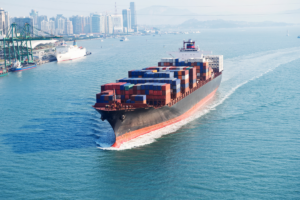In the next twelve months, trucking rates in the United States are likely to experience volatility due to the current push toward onshoring manufacturing and the implementation of increased import tariffs. These two interconnected trends will influence the trucking industry in complex ways, with potential for both upward and downward pressure on rates. Below, I’ll outline the key dynamics at play and provide a balanced prediction for how trucking rates may evolve over this period.
Onshoring Manufacturing: A Boost to Domestic Trucking Demand 
Onshoring refers to the shift of manufacturing back to the United States, driven in part by policies aimed at reducing reliance on foreign suppliers and boosting the domestic economy. As more goods are produced domestically, there will likely be an increased demand for trucking services to transport these products within the country. This surge in demand could push trucking rates higher, especially in the short term as companies adjust their supply chains to the new reality.
For example, if factories ramp up production in the U.S., trucks will be needed to move raw materials to manufacturing hubs and finished goods to distribution centers or retailers. This heightened activity could strain existing trucking capacity, leading to higher rates as shippers compete for available trucks.
Increased Import Tariffs: A Double-Edged Sword

Import tariffs—taxes levied on goods entering the U.S.—make foreign products more expensive, further incentivizing domestic manufacturing. However, their impact on trucking rates is not entirely positive. Here’s how tariffs could affect the industry:
- Higher Costs for Trucking Companies: Tariffs could increase the price of imported truck parts, equipment, or even fuel-related inputs. If trucking companies face higher operational costs, they may pass these on to customers in the form of elevated rates.
- Potential Economic Slowdown: On the flip side, tariffs could disrupt global trade and lead to a broader economic slowdown. If businesses and consumers face higher costs for goods (both imported and domestic), overall freight volumes might decline. A drop in demand for trucking services could put downward pressure on rates.
- Cross-Border Disruptions: Tariffs on key trading partners like Canada and Mexico could affect cross-border trucking, a significant segment of the industry. Disruptions in these supply chains might lead to higher rates for cross-border routes but could also reduce overall freight movement, complicating the rate outlook.
Other Influencing Factors
Beyond onshoring and tariffs, two additional factors will shape trucking rates over the next year:
- Fuel Costs: Fuel is a major expense for trucking companies. If tariffs or global market reactions increase oil prices, this could amplify rate increases. Conversely, stable or lower fuel costs might mitigate rate hikes.
- Trucking Capacity: The industry’s ability to adapt to changing demand will be critical. If carriers can quickly add trucks and drivers to meet a surge in domestic freight, rate increases might be limited. However, if capacity remains constrained (e.g., due to driver shortages), rates could spike.
Possible Scenarios
 The interplay of these factors creates several potential outcomes for trucking rates:
The interplay of these factors creates several potential outcomes for trucking rates:
- Surge in Domestic Demand: Onshoring significantly boosts U.S. manufacturing, increasing trucking needs and driving rates up.
- Cost-Driven Increases: Tariffs raise operational costs for trucking companies, leading to higher rates regardless of demand trends.
- Localized Supply Chains: Onshoring shortens supply chains, reducing the need for long-haul trucking and potentially lowering rates.
- Economic Slowdown: Tariffs dampen economic activity, reducing freight volumes and pushing rates down.
Prediction: Moderate Increase with Volatility
Given the current policy environment, I expect trucking rates to see a moderate increase over the next twelve months, with some volatility along the way. Here’s why:
- Short-Term Uptick: In the initial months, the shift toward onshoring and adjustments to tariffs are likely to increase domestic transportation needs, pushing rates higher as companies reconfigure supply chains.
- Longer-Term Uncertainty: If tariffs trigger a significant economic slowdown, freight demand could weaken later in the year, causing rates to stabilize or even decline.
- Balancing Act: The net effect will depend on how much domestic manufacturing growth offsets any trade-related economic headwinds.
Overall, the trucking industry is poised for a dynamic period. Rates are likely to rise moderately as the push for onshoring takes hold, but the situation remains fluid. Businesses should prepare for fluctuations and monitor broader economic indicators such as manufacturing output, consumer spending, and trade volumes—to gauge how these trends will ultimately play out.
As onshoring trends continue and import tariffs reshape the flow of goods, the freight market is poised for continued volatility in the year ahead. At TOP Worldwide, we stay ahead of shifting supply chain dynamics to provide reliable, cost-effective freight solutions, no matter the market conditions. Whether you’re navigating domestic distribution or adapting to new sourcing strategies, our team is here to help you optimize your transportation network and keep your business moving forward. Contact us today to discuss how we can support your 2025 logistics strategy.
 Jeff Berlin
Jeff Berlin
is the Chief Operating Officer of E.L. Hollingsworth & Co. and serves as the Senior Operations Executive for TOP Worldwide and Native American Logistics. With over 30 years of experience leading logistics and trucking companies, he brings deep industry expertise to his role. Jeff is also a CDL-A driver and a private pilot. Contact Jeff at jberlin@elhc.net.


